2.2: Aseptic Technique
- Page ID
- 122944
The procedure for aseptically transferring microorganisms is as follows:
1. Using a microincinerator to sterilize the inoculating loop
Microincinerators enable the sterilization of inoculating loops without having to use an open flame of a Bunsen burner. The microincinerator uses infrared heat at a temperature of 816°C to sterilize the wire portion of the inoculating loop. Be careful not to touch the top portion of the microincinerator. It becomes very hot!
a. At the start of class. turn on the microincinerator and wait 10 minutes for it to heat up.
b. Place the entire wire portion of the inoculating loop into the opening of the microincinerator and hold it there for 10 seconds (see Fig. 1). In this way all contaminants on the wire are incinerated. To avoid burning your hand on the handle of an overheated inoculating loop, never lay the loop down in the microincinerator and then attempt to pick it up. Never lay the loop down once it is sterilized or it may again become contaminated.
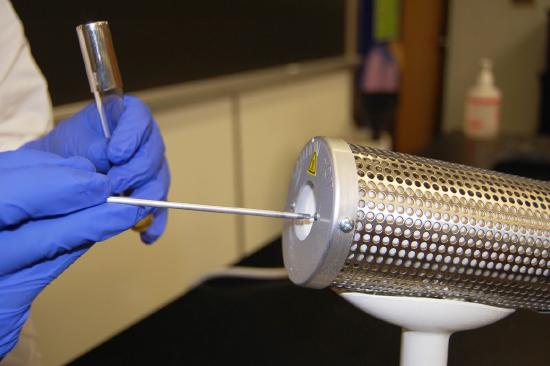
c. Allow the loop to cool 10-20 seconds before removing the inoculum.
2. Remove the inoculum.
a. Removing inoculum from a broth culture (organisms growing in a liquid medium):
1. Hold the culture tube in one hand and in your other hand, hold the sterilized inoculating loop as if it were a pencil. (See Fig. \(\PageIndex{2}\).)
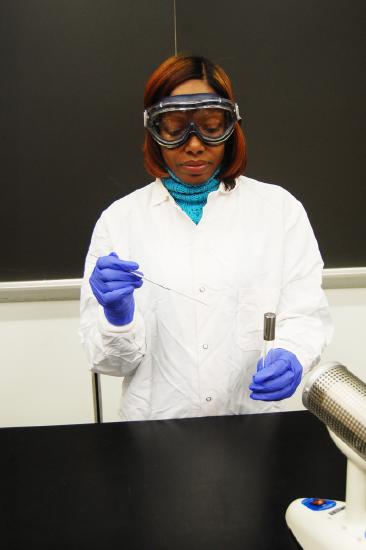
2. Remove the cap of the pure culture tube with the little finger of your loop hand. (See Fig. \(\PageIndex{3}\) and Fig. \(\PageIndex{4}\).) Never lay the cap down or it may become contaminated.
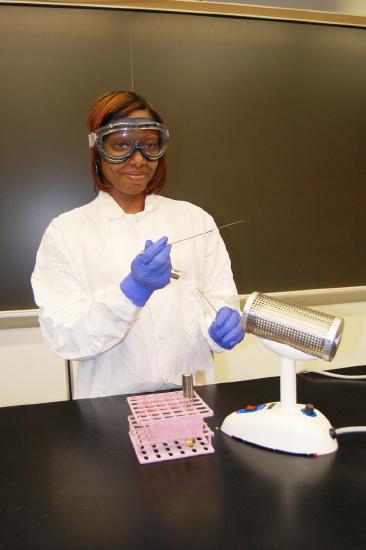
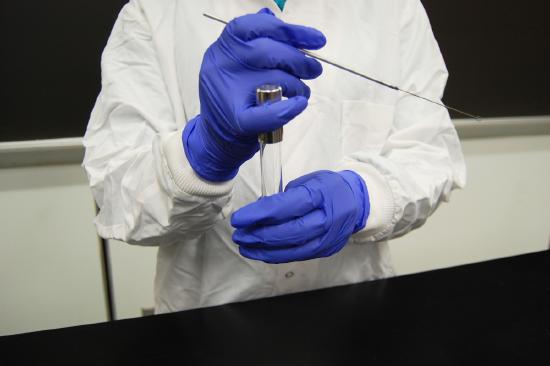
3. Place the lip of the culture tube at the opening of the microincinerator for 2-3 seconds (see Fig. \(\PageIndex{5}\)). This heats the glass and creates a convection current which forces air out of the tube and prevents airborne contaminants from entering the tube.
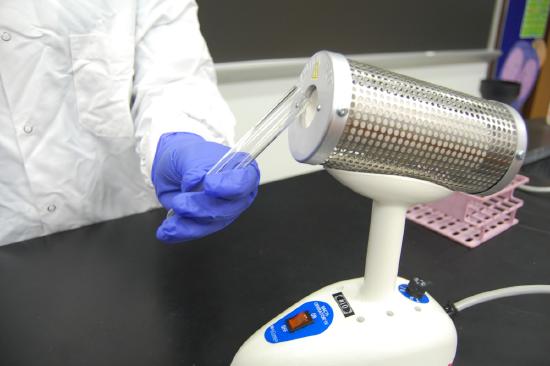
4. Insert the inoculating loop and remove a loopful of inoculum (see Fig. \(\PageIndex{6}\)).
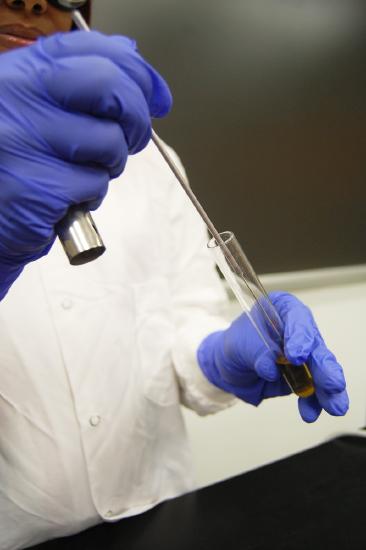
5. Again place the lip of the culture tube at the opening of the microincinerator for 2-3 seconds (see Fig. \(\PageIndex{7}\)).
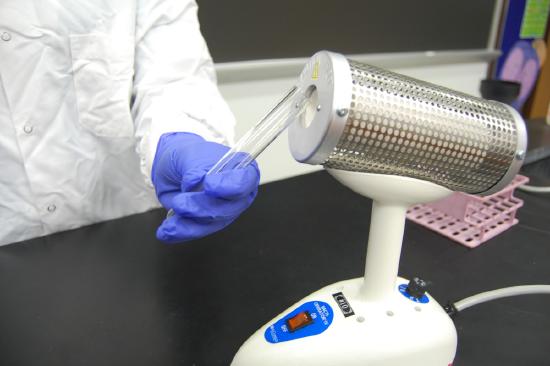
6. Immediately replace the cap (see Fig. \(\PageIndex{8}\)).
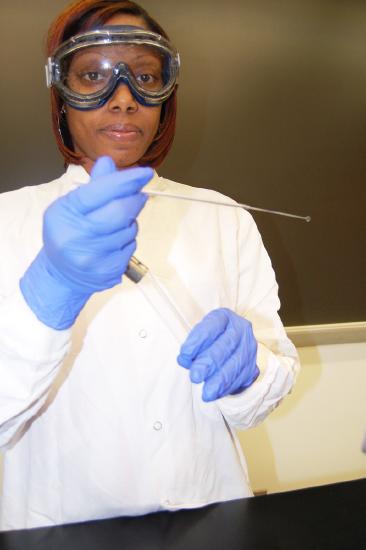
Contributors and Attributions
Dr. Gary Kaiser (COMMUNITY COLLEGE OF BALTIMORE COUNTY, CATONSVILLE CAMPUS)

